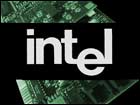|
Intel beats the Street
|
 |
January 15, 2002: 6:47 p.m. ET
Chip leader exceeds estimates but stock falls on 2002 outlook.
By Staff Writer Richard Richtmyer
|
NEW YORK (CNN/Money) - Boosted by strong demand for its high-end PC microprocessors, Intel on Tuesday reported a fourth-quarter operating profit that beat Wall Street's consensus estimates.
But executives provided a less-than-stellar forecast for growth in 2002 and cut their capital spending plans for the year substantially, resulting in a sharp after-hours decline in its stock and the stocks of many chip-equipment manufacturers.
"It's not a disaster," Drew Peck, semiconductor analyst at SG Cowen, told CNNfn's Street Sweep Tuesday. "But it's just not good enough to rally the stock."
After the closing bell, Intel, the world's largest supplier of PC processors, said its earnings, excluding acquisition-related costs, totaled $998 million, or 15 cents per share.
That's down 62 percent from $2.63 billion, or 38 cents per share, in the year-ago quarter, but better than the 11 cents per share analysts generally had expected, according to a survey conducted by First Call.
Accounting for acquisition-related costs, Intel's net income for the quarter was $504 million, or 7 cents per share. That compares with net income of $2.2 billion, or 32 cents per share, in the fourth quarter of 2000.
The company's revenue for the quarter came in at $7 billion, which is above the range of $6.7 billion-to-$6.9 billion executives had told the Street to expect when they upped their financial targets last month.
"Despite a weak economy, order patterns held until the end of the quarter, and demand was better than expected, boosting revenue and profits," Andy Bryant, Intel's chief financial officer, said in a teleconference Tuesday evening.
Citing strong demand for their Pentium 4 microprocessors, Intel (INTC: Research, Estimates) executives on Dec. 6 upped their revenue forecast for the fourth quarter, saying they expected it to come in between $6.7 billion and $6.9 billion.
They had entered the quarter with a more conservative estimate of a range between $6.2 billion and $6.8 billion, warning that declines in consumer spending as a result of the Sept. 11 terrorist attacks could affect the normal seasonal improvements in their business that come with the back-to-school and holiday seasons.
Nearly all the growth came from the Intel architecture group, which includes its PC processors and related chipsets, Bryant said. Meanwhile, Intel's other product areas, including flash memory, communication and wireless chips, continued to experience weakness, he said.
Intel has substantially ramped up production of its Pentium 4 processors in recent months and has been aggressively pricing them in a bid to stave off tough competition from AMD (AMD: Research, Estimates), which has been taking aim at Intel's market share with its Athlon XP+ line of processors.
The company also has been making improvements in its manufacturing, shifting to a 0.13 micron process from a 0.18 micron process, which refers to the size of the circuits etched into the silicon.
Using the 0.13 process yields more chips per silicon wafer and, therefore, improves profitability. The company also is beginning to use larger, 300-mm silicon wafers, which also improves manufacturing efficiency.
At 51.3 percent, Intel's fourth-quarter gross margin, the percentage of sales leftover after subtracting product costs, also exceeded the company's expectations. Executives had said they were aiming for a gross margin between 47 percent and 49 percent.
Bryant attributed the improvement to higher volumes, a better product mix, and fewer write-downs for excess capacity.
Looking ahead, Bryant said Intel expects revenue in the first quarter to be in a range between $6.4 billion and $7 billion. He said gross margins in the first quarter are likely to be "50 percent, plus or minus a couple of points."
By First Call's count, analysts recently had expected Intel's revenue in the current quarter to be about $6.5 billion and its earnings to come in at 12 cents per share.
For all of 2002, Bryant said Intel's gross margin is expected to be "51 percent, plus or minus a few points," a forecast S.G. Cowen's Peck said could be what was pressuring Intel's shares.
After slipping 16 cents to $34.68 in Nasdaq trade ahead of the earnings news, Intel shares fell another 94 cents to $33.74 in extended-hours trade Tuesday.
Click here to check on chip stocks
"They had an upside surprise in gross margins, but their guidance for 2002 is basically flat from here," Peck said.
"There's no more upside coming. So we're not going to see more than 65, maybe 70 cents out of this company for the whole year. This is a very expensive stock to be earning 65 or 70 cents," Peck added.
The stocks of companies that make the equipment used to manufacture semiconductors also were pressured in extended hours trade after Intel's revealed its capital spending plans for the year.
After spending $7.3 billion in 2001, Intel plans to spend only $5.5 billion in 2002. That's much less than the $6.5 billion-to-$7 billion many industry observers had expected.
Bryant said most of the 2002 capital budget will go toward the more advanced 300-mm wafer equipment.
But the stocks of companies that make chip-equipment tumbled in extended hours trade.
Shares of Applied Materials (AMAT: up $0.30 to $45.61, Research, Estimates), the largest chip-equipment maker, fell 6.4 percent to $42.68 from $45.61 at the closing bell.
Other chip-equipment makers trading lower after the bell included KLA-Tencor (KLAC: down $0.43 to $55.31, Research, Estimates), which fell to $51.90 from $55.31, and Novellus Systems (NVLS: down $0.41 to $42.31, Research, Estimates), which was at $39.70 after closing at $42.31.
Intel's capital spending accounts for roughly 20 percent of the industry's total. 
|
|
|
|
|
|

|

